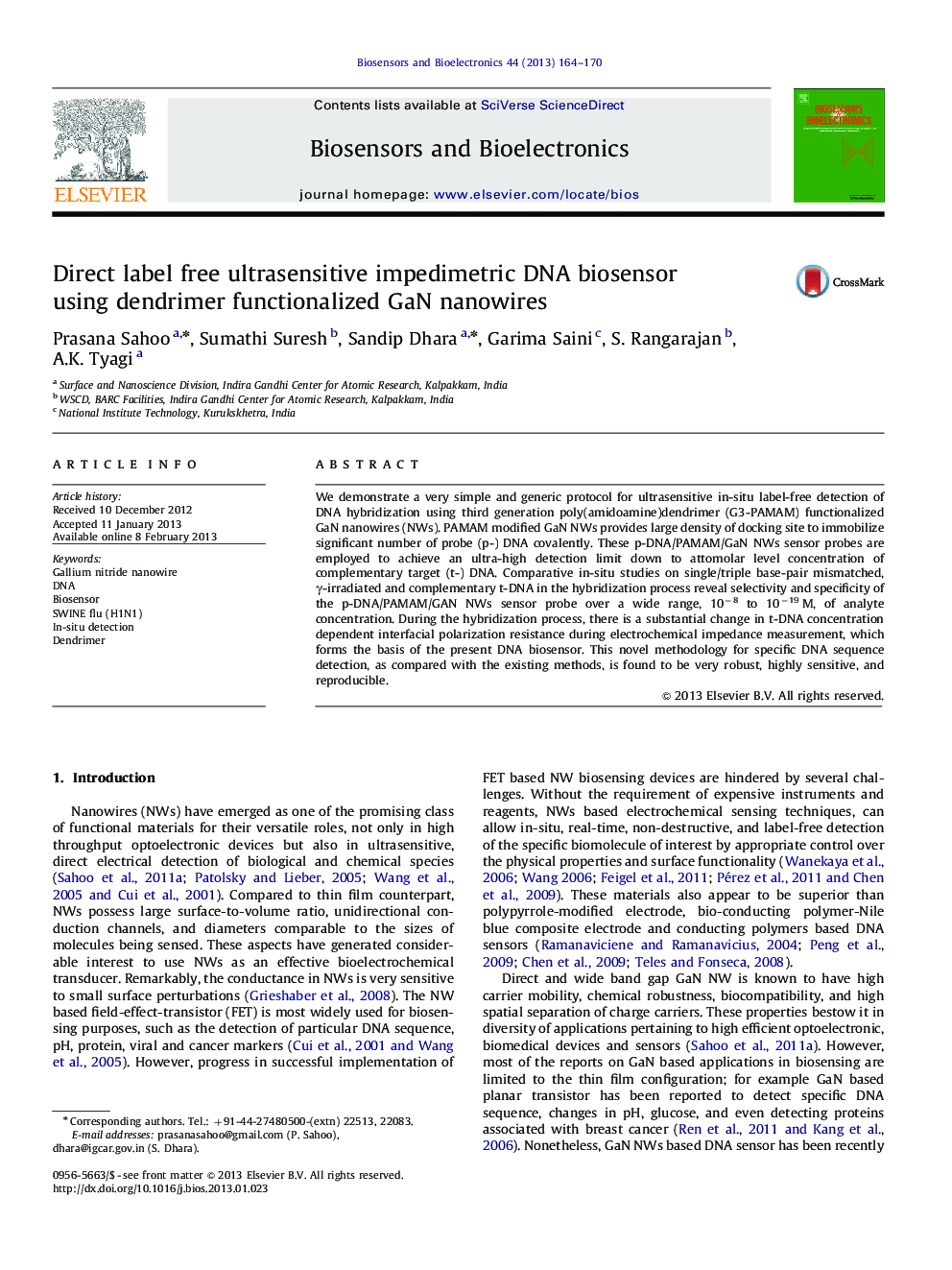| Article ID | Journal | Published Year | Pages | File Type |
|---|---|---|---|---|
| 866909 | Biosensors and Bioelectronics | 2013 | 7 Pages |
We demonstrate a very simple and generic protocol for ultrasensitive in-situ label-free detection of DNA hybridization using third generation poly(amidoamine)dendrimer (G3-PAMAM) functionalized GaN nanowires (NWs). PAMAM modified GaN NWs provides large density of docking site to immobilize significant number of probe (p-) DNA covalently. These p-DNA/PAMAM/GaN NWs sensor probes are employed to achieve an ultra-high detection limit down to attomolar level concentration of complementary target (t-) DNA. Comparative in-situ studies on single/triple base-pair mismatched, γ-irradiated and complementary t-DNA in the hybridization process reveal selectivity and specificity of the p-DNA/PAMAM/GAN NWs sensor probe over a wide range, 10−8 to 10−19 M, of analyte concentration. During the hybridization process, there is a substantial change in t-DNA concentration dependent interfacial polarization resistance during electrochemical impedance measurement, which forms the basis of the present DNA biosensor. This novel methodology for specific DNA sequence detection, as compared with the existing methods, is found to be very robust, highly sensitive, and reproducible.
► Nanowire based in-situ detection of DNA hybridization is demonstrated. ► An ultra low detection limit down to aM target DNA solution has been achieved. ► The selectivity of the sensor probe is shown by monitoring the sensor response from other non-specific target DNA. ► Change in the interfacial polarization resistance serves the basis of the present DNA biosensor.
